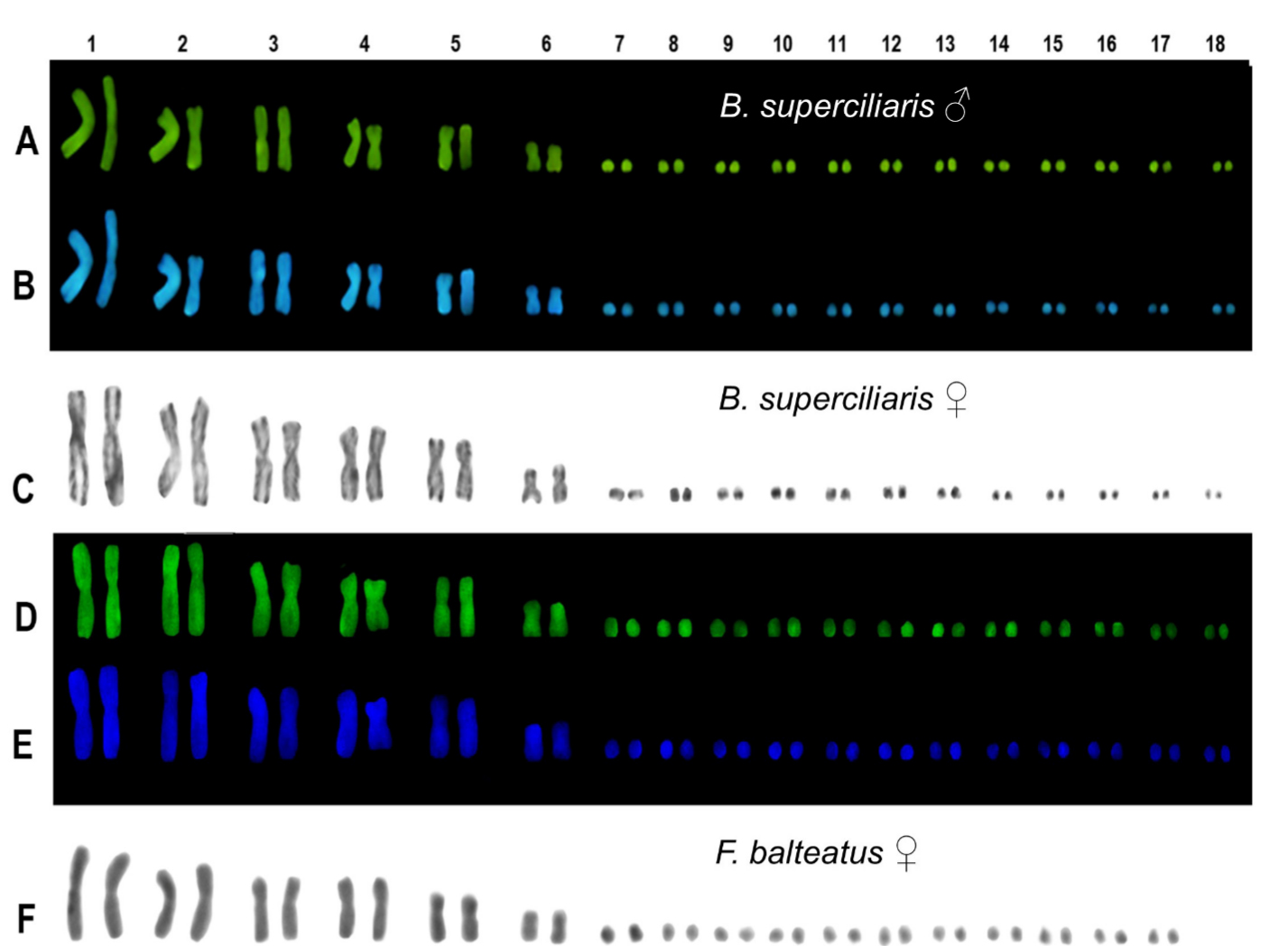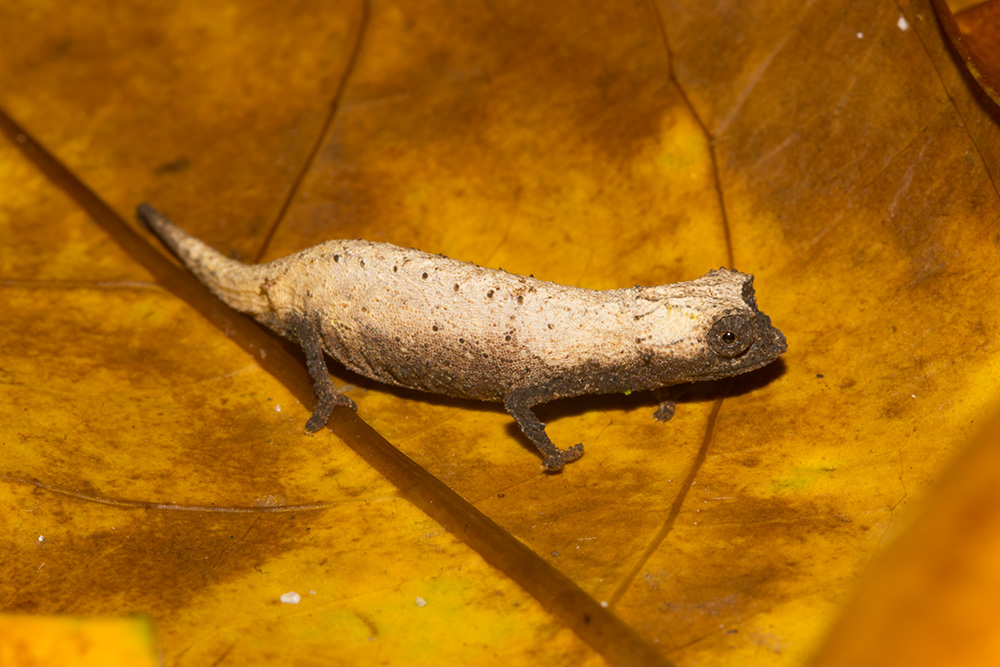It has been known for many years that the sex of chameleons is genetically determined. However, the karyograms of many species, i.e. the chromosome characteristics, are not yet known for all species. Italian scientists have now analysed the karyograms of five Madagascan chameleon species.
Existing, preserved chameleons were used for the study. One female each of the species Furcifer balteatus, Furcifer petteri, Furcifer major and Furcifer minor were sampled. One male and one female Brookesia superciliaris were also used for the study. All samples were subjected to DNA barcoding analysis using the mitochondrial gene fragment COI as a marker. The extracted DNA was amplified by PCR and then sequenced to create a karyogram for each animal.
The karyogram of Brookesia superciliaris is 2 n = 34 for both sexes. Of the 34 chromosomes, six are macrochromosome pairs and eleven are microchromosome pairs. All macrochromosomes are metacentric. Morphologically, the chromosomes do not differ from each other, so that it remains unclear which could be the sex chromosomes.
Furcifer balteatus has a very special karyogram, which actually fits better with those of the genera Brookesia and Palleon than with the genus Furcifer. The karyogram is 2n = 34, which is the highest number of chromosomes among the chameleons. Of the 34 chromosomes, six are macrochromosome pairs and eleven are microchromosome pairs. The former are all metacentric. There are no morphological differences between the chromosome pairs, so that the sex chromosome has not yet been determined.
The karyogram of Furcifer major is 2n = 24. Nine of the chromosome pairs are macrochromosome pairs and three are microchromosome pairs. Seven of the macrochromosome pairs are metacentric, only pairs two and three are submetacentric. The eleventh chromosome pair, a microchromosome pair, codes for the sex chromosome W.
Furcifer minor has a karyogram of 2n = 22 chromosomes. Of these, eight pairs are macrochromosome pairs and three are microchromosome pairs. Among the macrochromosomes, the first five pairs are metacentric, while the remaining three pairs are acrocentric. A portion of the sixth pair of chromosomes was almost completely heterochromatic and probably represents the sex chromosome W.
The karyogram of Furcifer petteri is also 2n = 22, of which eight pairs of chromosomes are macrochromosomes and three microchromosomes. Seven pairs of macrochromosomes are metacentric, only the fifth pair is submetacentric. The sex chromosome W is part of the seventh pair of macrochromosomes.
All newly described karyograms are deposited in GenBank under the number PQ272538-4. In this study, the genus Furcifer was also found to have the highest diversity in the karyograms. It also appears to be the only genus among all vertebrates that shows all variants of sex chromosome diversification.
New insights on Chromosome Diversification in Malagasy Chameleons
Marcello Mezzasalma, Gaetano Odierna, Rachele Macirella, Elvira Brunelli
Animals 2024, 14: 2818
DOI: 10.3390/ani14192818
Graphic: Karyograms of Brookesia superciliaris and Furcifer balteatus from the above-mentioned study











